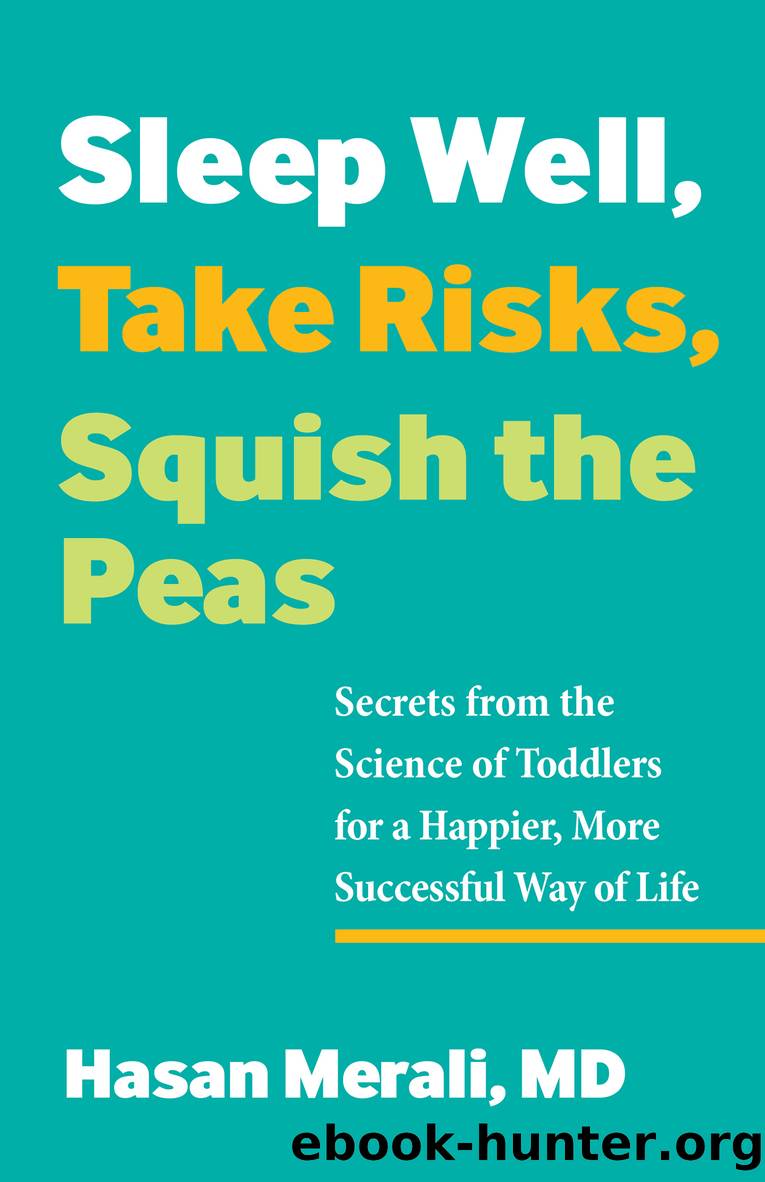Sleep Well, Take Risks, Squish the Peas by Hasan Merali

Author:Hasan Merali
Language: eng
Format: epub
Publisher: Health Communications Inc
Published: 2024-03-19T00:00:00+00:00
Leading by Example
While offering direct guidance on our career choices is incredibly important, it is equally important for a mentor to lead by example. This is especially true when it comes to motivating a mentee to consistently work hard. Staying persistent is what can help us achieve our biggest goals. Often, people give up on large projects (such as writing a book) prematurely. A mentor can help us stay persistent by demonstrating what they do day-to-day.
In a study published in 2017, researchers sought to understand what toddlers would do with a new task after they observed an adult working on a different task. Think of a mentor-mentee relationship in which both parties might be in related fields but working on different projects. This study included over one hundred one-year-olds that were split up into three groups. The first group of children, called the Effort group, observed an adult perform two different tasks: opening a box to retrieve a toy, and removing a key chain from a carabiner. All along, the adult would narrate what they were doing, âHmm⦠I wonder how I can get my toy out of here? Does this work? No, how about thisâ¦?â After thirty seconds in each case, the adult was successful in the task. The next group of children, in the No Effort condition, observed an adult complete the same tasks in ten seconds without any of the narration and minimal effort. And in the final condition, the Baseline condition, the children didnât see any modeled behavior. After this phase all the children were given a new toy, which was a music box with two buttons. One was an obvious button that was visible but didnât do anything when pushed, and the other was a hidden button to activate it. The researcher pushed the hidden button prior to giving it to the child so the children could see that it was a toy that worked but they didnât know how they could make it sing.
For the analysis, the researchers then looked at how many times the toddler pressed the inactive button, a measure of persistence, before two minutes was up, they handed off the toy, or they threw the toy on the ground. In the end, the toddlers who saw adults work through the tasks made more attempts to achieve the goal with their own task compared to children who either saw the adult easily perform the tasks or did not see any modeling. The authors note the value in having children âsee you sweatâ and conclude that âshowing children that hard work works might encourage them to work hard too.â16
This experiment does not stand alone, as researchers showed similar results in a different study with four- and five-year-olds. Through a series of four experiments with more than five hundred children, preschoolers observed adults performing a task and either succeeding or failing, as well as trying hard or not. The children then tried their own task. It was shown that persistence was strongly linked to the combination of seeing the adult both succeed and work hard.
Download
This site does not store any files on its server. We only index and link to content provided by other sites. Please contact the content providers to delete copyright contents if any and email us, we'll remove relevant links or contents immediately.
Rewire Your Anxious Brain by Catherine M. Pittman(17599)
Talking to Strangers by Malcolm Gladwell(11905)
The Art of Thinking Clearly by Rolf Dobelli(8862)
Mindhunter: Inside the FBI's Elite Serial Crime Unit by John E. Douglas & Mark Olshaker(7848)
Becoming Supernatural by Dr. Joe Dispenza(7119)
Change Your Questions, Change Your Life by Marilee Adams(6654)
The Road Less Traveled by M. Scott Peck(6646)
Nudge - Improving Decisions about Health, Wealth, and Happiness by Thaler Sunstein(6642)
The Lost Art of Listening by Michael P. Nichols(6481)
Enlightenment Now: The Case for Reason, Science, Humanism, and Progress by Steven Pinker(6414)
Win Bigly by Scott Adams(6327)
Mastermind: How to Think Like Sherlock Holmes by Maria Konnikova(6250)
The Way of Zen by Alan W. Watts(5809)
Daring Greatly by Brene Brown(5651)
Grit by Angela Duckworth(4746)
Big Magic: Creative Living Beyond Fear by Elizabeth Gilbert(4734)
Men In Love by Nancy Friday(4340)
Flow by Mihaly Csikszentmihalyi(4060)
The Four Tendencies by Gretchen Rubin(4028)
